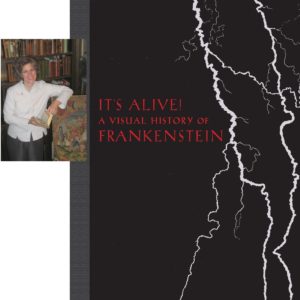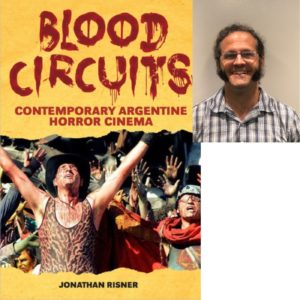Horror movie history – “Wasteland: The Great War and the Origins of Modern Horror” (Counterpoint, 2018) – W. Scott Poole interview
Podcast: Play in new window | Download
Subscribe: Apple Podcasts | RSS
 Scott Poole is a professor of history in American pop and folk culture with a heavy emphasis on horror studies. We talked about his latest book that examines the effect World War One had on horror movies.
Scott Poole is a professor of history in American pop and folk culture with a heavy emphasis on horror studies. We talked about his latest book that examines the effect World War One had on horror movies.
0:56 – Scot talks about how he got into studying horror.
2:58 – Scott talks about the book and how World War One changed horror literature and stories.
9:58 – Scott talks about directors and creators who delved into horror.
12:45 – Scott talks about how Franz Kafka is associated with horror.
16:03 – Scott talks about the occult, horror and the Great War.
22:57 – Scott talks about French author Celine’s affect on horror.
25:33 – Scott talks about the death of animals affected horror.
28:34 – Scott talks about how he found old horror films and war footage.
35:30 – Scott talks about comedy in early horror.
38:39 – Scott talks about the great emotional difficulty he had in writing this book.
43:11 – Scott talks about an interesting discovery he made about Bela Lugosi.
53:04 – Scott tweets @monstersamerica.
For more of “The Art and Design of Sci-Fi and Fantasy, Mystery and Horror” please follow me on Facebook at crisalvarezwlc, on youtube at Cris Alvarez and on Instagram @crisalvarezscifi
Guests: Scott Poole
Host: Cris Alvarez
Tags: horror, movies, literature, Kafka, Lovecraft, Peter Lorre, Bela Lugosi, World War One, The Great War, Celine, movie directors, Nazis, occult
 Liz Denlinger co-curates the Shelley collection of the New York Public Library system. She has helped develop a new exhibition on Frankenstein and has put together a visual history of Frankenstein for it. We discuss the book and the exhibit.
Liz Denlinger co-curates the Shelley collection of the New York Public Library system. She has helped develop a new exhibition on Frankenstein and has put together a visual history of Frankenstein for it. We discuss the book and the exhibit. Jonathan Risner is Assistant Professor of Spanish at Indiana University Bloomington. He discovered Argentine horror and wondered how much of the country’s brutal dictatorship impacted that country’s horror films. We discuss his book on the topic.
Jonathan Risner is Assistant Professor of Spanish at Indiana University Bloomington. He discovered Argentine horror and wondered how much of the country’s brutal dictatorship impacted that country’s horror films. We discuss his book on the topic.